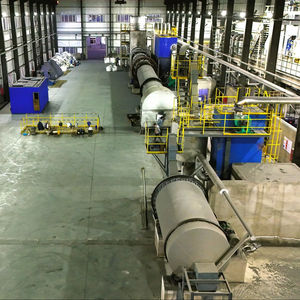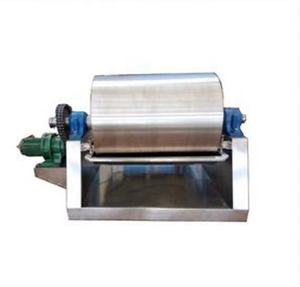Immediate response to heavy machinery pinning an arm constitutes a severe industrial emergency demanding rapid, coordinated action grounded in safety protocols and medical knowledge. As mechanical engineers, we understand the immense forces involved and the critical importance of structured procedures to maximize survival and minimize long-term injury. The following outlines the essential steps based on engineering safety principles and emergency medical response.
(What To Do When Heavy Machinery Falls On Your Arm)
1. Immediate Self-Assessment and Communication:
Do NOT attempt to pull your arm out. This can cause catastrophic tearing of tissues, blood vessels, and nerves already compromised by the crushing force.
Assess Consciousness and Breathing: Ensure you are conscious and breathing normally. If breathing is difficult, try to position yourself as best as possible to maintain an open airway. Panic increases oxygen demand; focus on controlled breathing.
Call for Help Immediately: Shout, use a radio, activate a personal emergency beacon, or press a panic button if accessible. Clearly state your location, the nature of the accident (“arm pinned under [specific machine name/type]”), and your condition. Time is critical.
2. Scene Safety and Securing the Hazard:
Prevent Secondary Injury: If possible, and without moving the pinned limb, attempt to stabilize yourself and the immediate environment to prevent further collapse or movement. If the machine is still operational, shout warnings to others.
Energy Isolation (Lockout/Tagout – LOTO): This is paramount. Rescuers must isolate all energy sources to the machine before any rescue attempt. This includes electrical power (disconnect, lockout), hydraulic pressure (release, block), pneumatic pressure (vent, block), and potential gravitational energy (block, crib). As the victim, if you can safely reach controls without moving the trapped limb, attempt to shut down the machine. However, never compromise your stability or the pinned limb to do so. Relay vital information about energy sources to rescuers.
3. Awaiting and Assisting Professional Rescue:
Stay as Still as Possible: Minimize movement to reduce pain and further injury.
Communicate with Rescuers: Provide clear information about your pain level, sensation in the trapped limb (numbness, tingling), and any changes. Inform them of the exact location and nature of the pinch/crush point if visible.
Do NOT Allow Untrained Personnel to Lift the Machinery: Well-meaning colleagues attempting to lift the equipment can cause sudden shifts, leading to further crushing, destabilization, or secondary collapses. Only trained rescue personnel using appropriate lifting/cribbing equipment should attempt extrication. Hydraulic rescue tools (spreaders, rams) are often required.
4. Medical Management During and After Extrication:
Crush Syndrome Awareness: This is a life-threatening condition caused by the release of toxins (like myoglobin, potassium) from crushed muscle tissue when the pressure is removed. It can lead to kidney failure, cardiac arrest, and shock. Medical personnel must be present and prepared to manage this immediately upon limb release.
Advanced Medical Support On-Scene: Intravenous (IV) fluids should be administered before extrication, if possible, to help flush toxins and prevent shock. Oxygen may also be provided.
Tourniquet Application: A tourniquet should only be applied by trained medical personnel if there is catastrophic, life-threatening bleeding that cannot be controlled by direct pressure. Improper tourniquet use can worsen ischemia-reperfusion injury and crush syndrome complications. Its routine use for crush injuries without active arterial bleeding is generally contraindicated.
Limb Stabilization: Once freed, the injured limb must be carefully immobilized (splinted) to prevent further damage during movement. It will be grossly swollen and unstable.
Rapid Transport: Immediate transport to a trauma center equipped for complex orthopedic and vascular injuries is essential. Continuous medical monitoring en route is critical due to crush syndrome risks.
5. Engineering and Procedural Prevention (Root Cause Analysis):
While emergency response is vital, prevention is the core engineering responsibility. This incident necessitates a thorough investigation:
Machine Safeguarding: Were appropriate guards, interlocks, or light curtains in place and functional? Could better guarding have prevented access to the pinch point?
Stability and Rigging: Was the machine properly supported during maintenance or movement? Were lifting points, slings, and cribbing adequate and correctly used?
LOTO Procedure Adherence: Was LOTO strictly followed? Were isolation points clearly identified and accessible? Was there procedure bypass or inadequate verification?
Training and Supervision: Were personnel adequately trained on the specific machine hazards, safe work procedures (including LOTO), and emergency response? Was supervision effective?
Workplace Organization: Could better housekeeping or layout have prevented the incident? Was there adequate space for safe operation and maintenance?
(What To Do When Heavy Machinery Falls On Your Arm)
A crush injury under heavy machinery demands an integrated response prioritizing energy isolation, professional extrication, immediate advanced medical intervention for crush syndrome, and rapid transport. As engineers, our ultimate duty lies in rigorously analyzing the failure and implementing robust engineering and procedural controls to prevent such devastating events from occurring in the first place. Safety systems and protocols are not mere paperwork; they are the critical barriers protecting life and limb.


